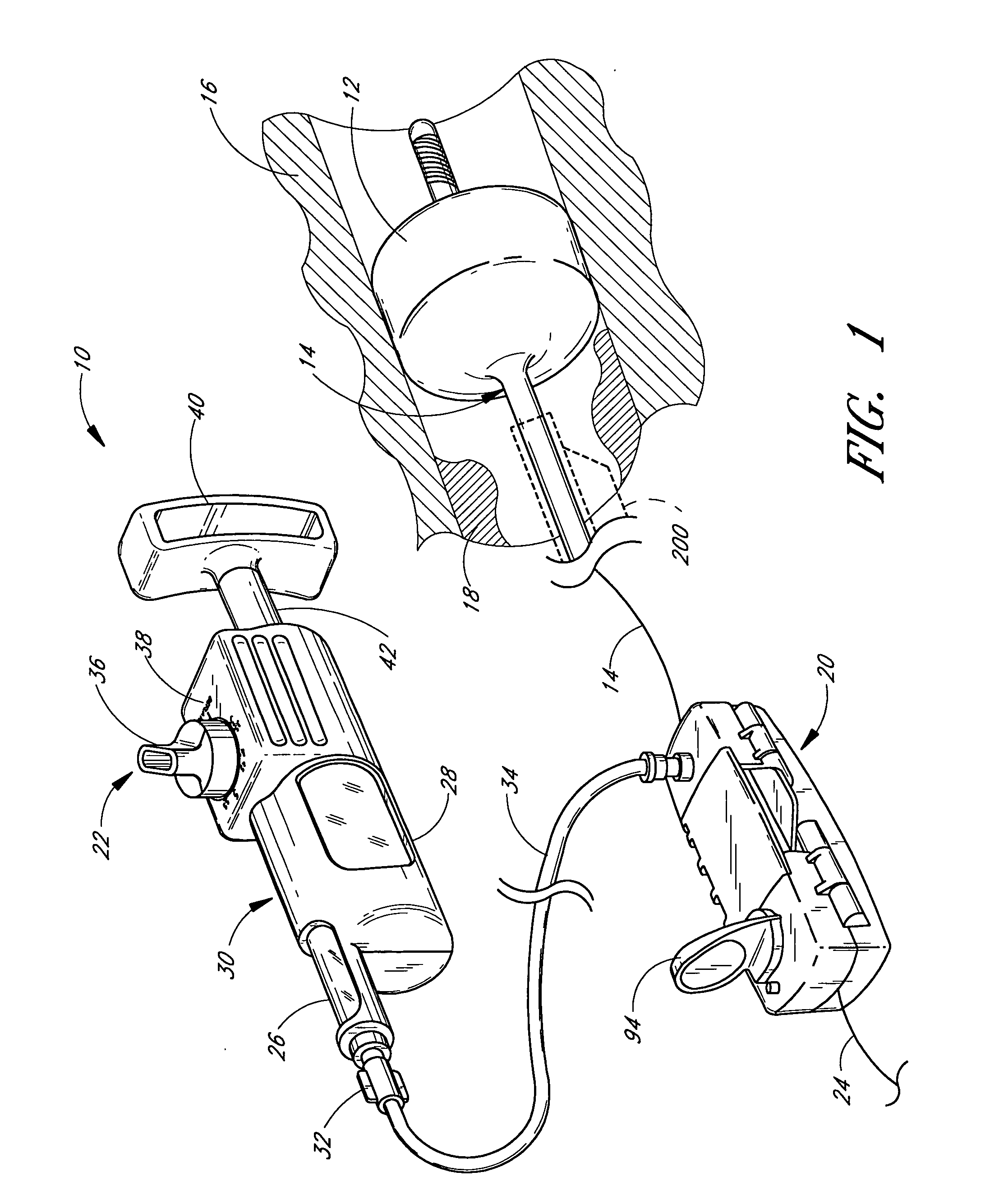Method and apparatuses for treating an intravascular occlusion
a technology of intravascular occlusion and treatment method, which is applied in the field of treating intravascular occlusion, can solve the problems of serious and permanent injury, death, and reduced blood carrying capacity of the vessel, and achieves the effects of reducing the risk of strok
- Summary
- Abstract
- Description
- Claims
- Application Information
AI Technical Summary
Benefits of technology
Problems solved by technology
Method used
Image
Examples
Embodiment Construction
[0157] Certain preferred embodiments of the present invention provide methods for localized drug delivery in high concentration to the site of an intravascular occlusion by using an aspiration catheter for both aspiration and drug delivery. This method is used either alone, or in combination with a therapy catheter as discussed below. The drug delivery method may be used in conjunction with any method for preventing distal embolization during removal of plaque, thrombi or other occlusions from a blood vessel. A preferred embodiment of the present invention is adapted for use in the treatment of a stenosis or an occlusion in a blood vessel in which the stenosis or occlusion has a length and a width or thickness which at least partially occludes the vessel's lumen. Thus, the method is effective in treating both partial and complete occlusions of blood vessels.
[0158] It is to be understood that “occlusion” as used herein with reference to a blood vessel is a broad term and is used in ...
PUM
 Login to View More
Login to View More Abstract
Description
Claims
Application Information
 Login to View More
Login to View More - R&D
- Intellectual Property
- Life Sciences
- Materials
- Tech Scout
- Unparalleled Data Quality
- Higher Quality Content
- 60% Fewer Hallucinations
Browse by: Latest US Patents, China's latest patents, Technical Efficacy Thesaurus, Application Domain, Technology Topic, Popular Technical Reports.
© 2025 PatSnap. All rights reserved.Legal|Privacy policy|Modern Slavery Act Transparency Statement|Sitemap|About US| Contact US: help@patsnap.com



